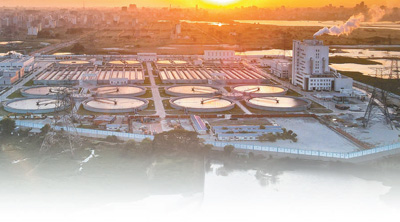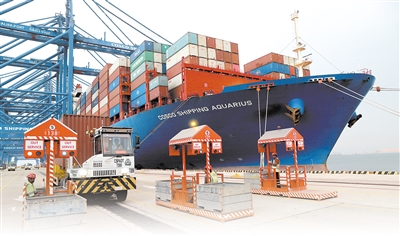Why Can't Overcapacity Be Solved By Reducing Production
Why Can't Overcapacity Be Solved By Reducing Production
This is a very profound and core economics issue. Simply put, "increasing domestic demand" and "reducing production" are both means to solve overcapacity, but "increasing domestic demand" is a more active, more fundamental and more in line with long-term development goals.
This is a very profound and core economics issue. Simply put, "increasing domestic demand" and "reducing production" are both means to solve overcapacity, but "increasing domestic demand" is a more active, more fundamental and more in line with long-term development goals, while "reducing production" is a more negative, more symptomatic and usually only adopted when it is necessary.
Below we will analyze in-depth why "increasing domestic demand" is a better solution from an economic perspective.
1. First, we clarify what "overcapacity" is and its harms
Overcapacity refers to the actual output capacity of a country or industry, which far exceeds its total demand (including domestic demand and foreign demand), resulting in a large number of production resources (equipment, labor, capital) being idle and product backlog.
The harm is huge:
Corporate level: Products cannot be sold, inventory is backlogged, profits decline or even losses, and they are forced to lower prices and fight a "price war", leading to vicious competition.
Financial level: Enterprises cannot pay back their loans, and the bad debts of banks increase, causing financial risks.
Social level: In order to survive, enterprises will lay off employees and reduce salaries, resulting in an increase in unemployment rate, a decrease in residents' income, and social instability.
Macro level: Economic growth stagnates or even declines (GDP declines), and the risk of deflation is intensifying (prices continue to fall, and people are even more reluctant to consume).

2. Why is “reducing production” usually a suboptimal or even a worst-case approach?
The core idea of "reducing production" is to match shrinking demand by directly reducing supply. It is necessary in some extreme cases, but the disadvantages are very obvious.
Disadvantage 1: Causing severe economic recession and social problems
The most direct consequence of the production cut is:
Large-scale unemployment: Factory shutdowns and production lines shut down, which means a large number of workers have been fired.
Tide of corporate bankruptcy: In the fierce competition, small and medium-sized enterprises were first eliminated, triggering a chain reaction.
Bank bad debts surge: Businesses go bankrupt and loans cannot be repaid, which may trigger a financial crisis.
Deflation spiral: Unemployment and decline in income have led to further shrinking consumption, falling prices, and worse corporate profits, which has led to larger production cuts and layoffs, and the economy has fallen into a vicious cycle.
During the Great Depression in the United States in 1929, in order to maintain prices, capitalists would rather pour milk into the Mississippi River than to lower prices or give it to the poor. This is an extreme and destructive "production cut." It did not solve the problem, but instead exacerbated social contradictions and economic collapse.
Disadvantage 2: Causing huge waste of resources
Production capacity itself is a valuable resource, which condenses a large amount of capital, technology and labor investment. Direct production cuts and equipment shutdowns mean that all these early investments are in vain, which is a huge waste of social wealth. These idle machines, abandoned factories, and unemployed workers are all "sinking costs" for the economy.
Disadvantage 3: Strike long-term investment confidence
If the government and enterprises generally adopt a production cut strategy, it will send an extremely pessimistic signal to the market: this industry has no future. This will seriously hit the confidence of entrepreneurs and investors, causing them to dare to engage in new investments and technology research and development, and in the long run, it will damage a country or region's innovation capabilities and growth potential.

Conclusion: Selection and integration of strategies
Therefore, from the perspective of goals: increasing domestic demand is the "development" orientation, aiming to solve problems and create new growth points; production cuts are the "contraction" orientation, aiming to stop losses but will pay a huge price.
From the perspective of effect: increasing domestic demand is the "root" strategy and can repair the fundamental driving force of the economy; reducing production is the "synthetic" strategy, which can only temporarily alleviate the contradiction between supply and demand, and may even worsen the problem.
From the perspective of cost: The price of increasing domestic demand is that the government needs to invest financial resources (such as issuing bonds and reducing taxes), but it can bring economic vitality and social stability; the price of production cuts is unemployment, corporate bankruptcy and financial risks, and the social costs are extremely high.
Of course, this does not mean that "production reduction" should not be used at all. In actual operation, the two are often used in combination, but there is a distinction between primary and secondary.
For "zombie enterprises" and severely backward and polluted production capacity, we must resolutely and decisively "reduce production" or even "clear out". It's like performing surgery on the economy, removing necrotic tissue, so that the healthy parts can grow better. This "production reduction" is to "release the cage and replace the birds" and free up resources and market space for emerging industries and high-quality production capacity.
For industries with technical foundation and market prospects but temporarily facing insufficient demand, the focus should be on "increasing domestic demand", and through policy guidance and market innovation, they should help them overcome difficulties and achieve transformation and upgrading.
In short, the ideal path to solve overcapacity is: to take "increasing domestic demand" as the main engine to drive economic transformation and upgrading and high-quality development; at the same time, it is supplemented by precise "structural production reduction", eliminate backward production capacity, and optimize the economic structure. This is a kind of wisdom of "protecting, suppressing, supporting and controlling", aiming to achieve long-term, healthy and sustainable development of the economy.





